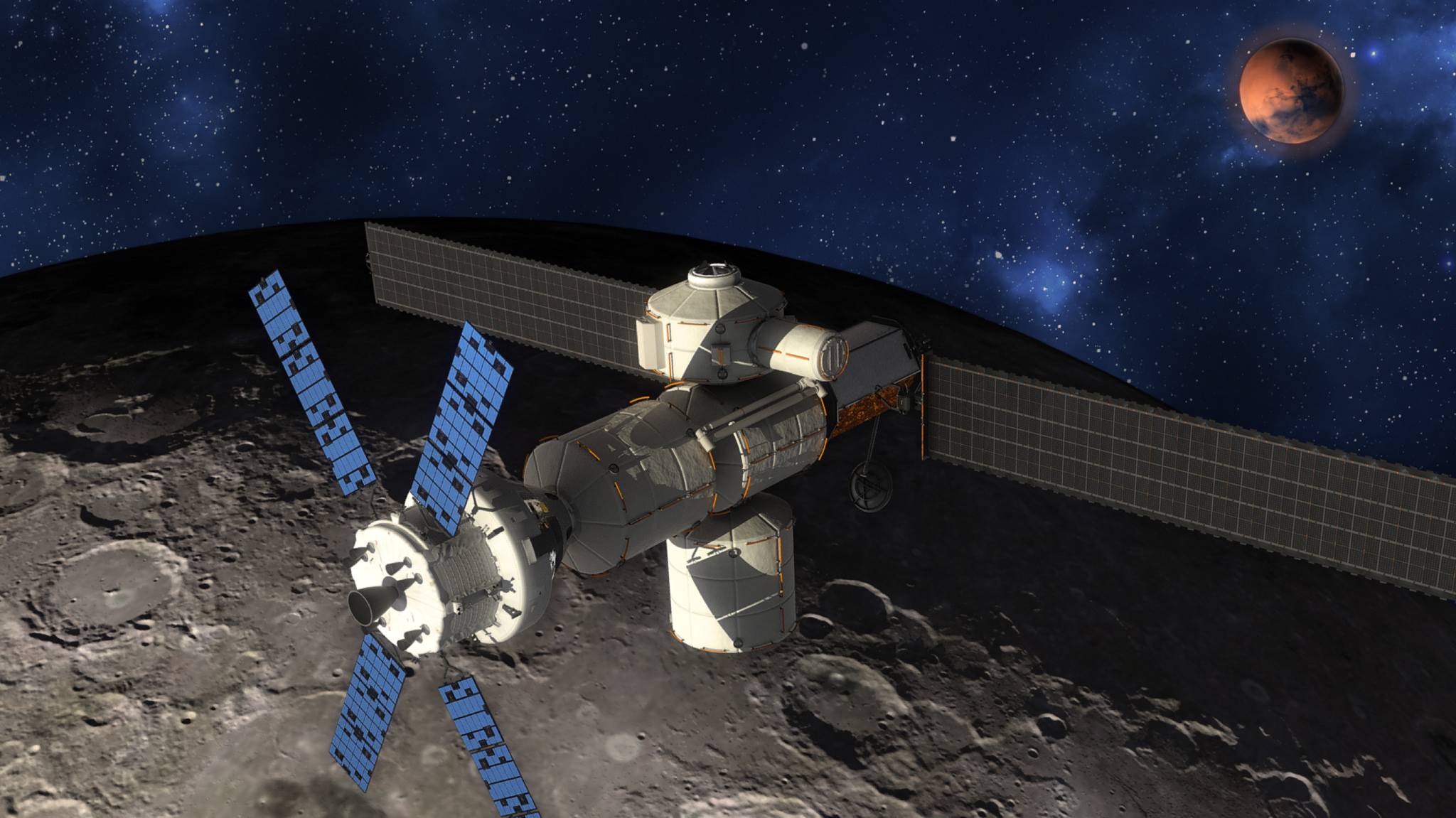Over the next several months, NASA will conduct a series of ground tests inside five uniquely designed, full-size, deep space habitat prototypes. The mockups, constructed by five American companies, offer different perspectives on how astronauts will live and work aboard the Gateway – the first spaceship designed to stay in orbit around the Moon, providing the critical infrastructure needed for exploration, science and technology demonstrations on the lunar surface.
NASA doesn’t plan to select one habitat prototype to advance to flight – rather, the tests will help NASA evaluate the design standards, common interfaces, and requirements for a future U.S. Gateway habitat module, while reducing risks for eventual flight systems.
“These tests were formulated so that we can do a side-by-side comparison of very different and innovative concepts from U.S. industry,” said Marshall Smith, who leads human lunar exploration programs at NASA Headquarters in Washington. “While we won’t dictate a specific design when we procure the U.S. habitat, we will enter the procurement phase with far less risk because of the knowledge we gain from these tests.”
NASA assembled a team from across the agency and from U.S. industry to conduct these tests. Engineers and technicians will analyze habitat system capabilities and performance proposed by each prototype concept, while human factors teams consider layout and ergonomics to optimize efficiency and performance. During the tests, future Gateway flight operators at NASA’s Johnson Space Center in Houston will collect actual live telemetry streams from each prototype. Flight operators will monitor habitat performance and support realistic mission activities as astronauts conduct “day-in-the-life” procedures within each habitat prototype, providing their perspectives as potential crew members who may one day live and work aboard the Gateway.
In addition to the physical enclosure, each company has outfitted their prototype with the basic necessities to support humans during deep space expeditions—including environmental control and life support systems, avionics, sleeping quarters, exercise equipment, and communal areas.
The Prototypes
The NextSTEP Habitation effort began in 2015 with four companies completing year-long concept studies. Those studies set the foundation for prototype development from 2016-2018—this time with five companies submitting concepts. Their prototype approaches are listed below, as well as a concept study outline from a sixth company, NanoRacks:
Lockheed Martin – Testing at NASA’s Kennedy Space Center, Florida
The Lockheed Martin prototype is based on a Multi-Purpose Logistics Module (MPLM), which was originally designed to provide logistics capabilities for the International Space Station. The design leverages the capabilities of Lockheed’s robotic planetary spacecraft and the Orion capsule that will transport astronauts to and from the Gateway. The prototype includes a reconfigurable space that could support a variety of missions, and combines hardware prototyping and software simulation during the test.
Northrop Grumman – Testing at NASA’s Johnson Space Center, Texas
Northrop Grumman’s prototype leverages the company’s Cygnus spacecraft that delivers supplies to the International Space Station. The Cygnus took its maiden flight in 2013, and is already human-rated. Northrop Grumman’s habitat mockup focuses on providing a comfortable, efficient living environment as well as different internal configuration possibilities.
Boeing – Testing at NASA’s Marshall Space Flight Center, Huntsville, Alabama
Proven space station heritage hardware is the key ingredient in Boeing’s Exploration Habitat Demonstrator. Named the prime space station contractor in 1993, the company developed multiple space station elements. Their demonstrator will leverage heritage assets, with a focus on optimizing interior volume, with isolated areas offering the capability to use different atmospheres for payloads without impacting cabin atmosphere.
Sierra Nevada Corporation – Testing at NASA’s Johnson Space Center, Houston, Texas
Sierra Nevada’s Large Inflatable Fabric Environment (LIFE) habitat is designed to launch in a compact, “deflated” configuration, then inflate once it’s in space. The benefit of inflatables (also called expandables) is their final configuration is capable of providing much larger living space than traditional rigid structures, which are limited in size by the payload volume of the rocket used to launch it. The LIFE Prototype inflates to 27 ft in diameter and simulates three floors of living areas.
Bigelow Aerospace – Testing at Bigelow Aerospace, North Las Vegas, Nevada
Bigelow’s B330 prototype is an expandable module that expands in space, as its name suggests, to provide 330 cubic meters of livable area. Bigelow sent a smaller module, the Bigelow Expandable Activity Module (BEAM) to the space station in 2015, where astronauts expanded the structure live on NASA Television with compressed air tanks. The BEAM completed a two-year demonstration aboard the station, proving soft-goods resilience to the harsh space environment. Following its demonstration period, NASA extended BEAM’s time aboard the station to become a storage unit.
NanoRacks – Concept Study
NanoRacks has proposed yet another concept to maximize habitable volume for Gateway astronauts. The company’s idea is to refurbish and repurpose a spent rocket propellant tank, leveraging the natural vacuum of space to flush the tank of residual propellants. The company completed a feasibility study outlining the concept to convert and outfit a propellant tank into a deep space habitat.
Operational – Driven Engineering
“This prototyping approach allows us to design, build, test and refine the habitat long before the final flight version is developed,” said NASA astronaut Mike Gernhardt, principal investigator of the agency’s habitation prototype test series. “We are using this operational-driven engineering approach to gain an early understanding of exactly what we need to address the mission, thereby reducing risk and cost.”
Using this approach, the builders, operators, and future users of the Gateway work together to evaluate concepts earlier and more completely, which helps NASA move forward to the Moon as early as possible.
The Gateway will be a temporary home and office for astronauts farther in space than humans have ever been before, and will be a home base for astronaut expeditions on surface of the Moon, and for future human missions to Mars. The NextSTEP approach bolsters American leadership in space, and will help drive an open, sustainable and agile lunar architecture.































